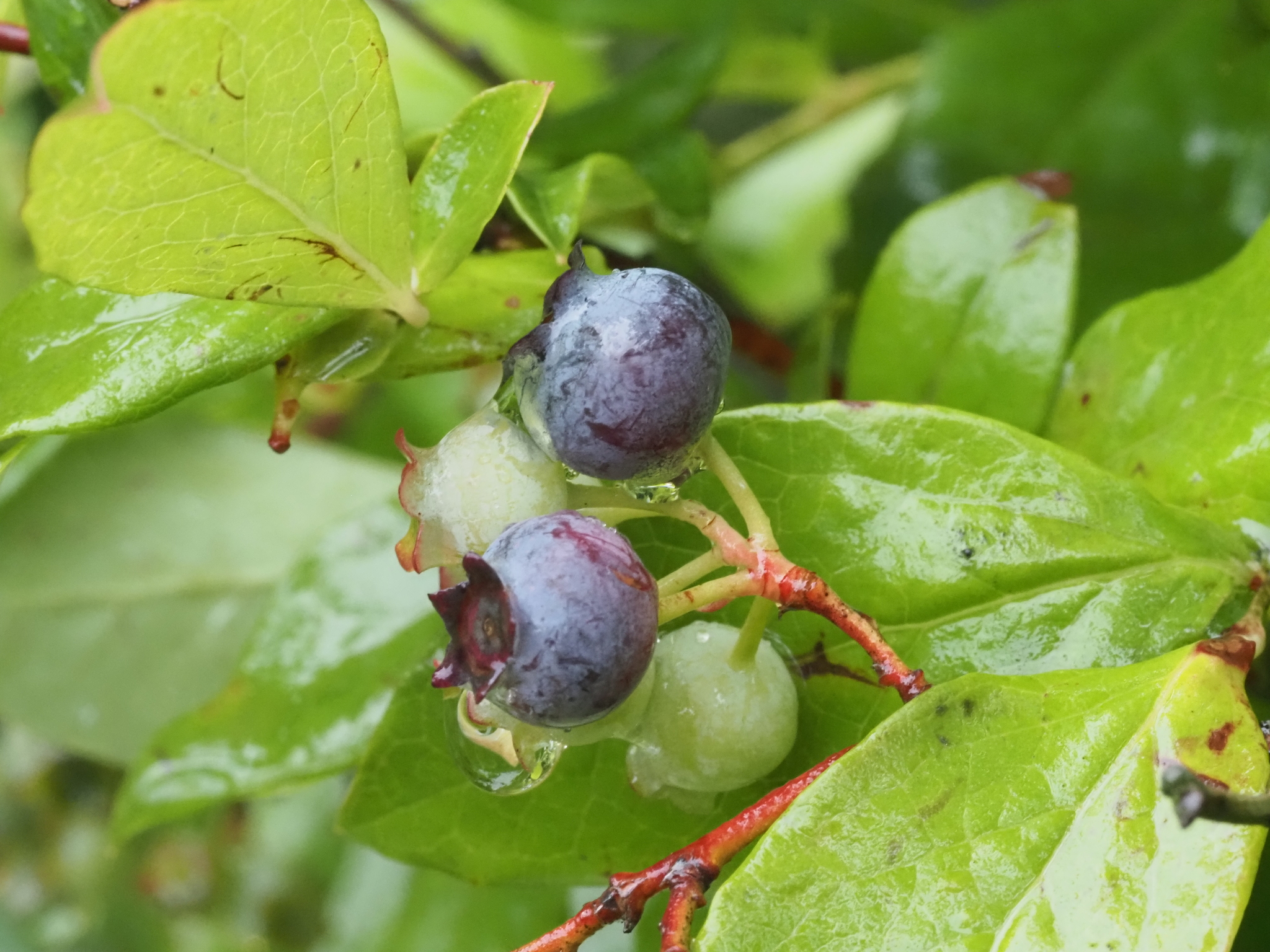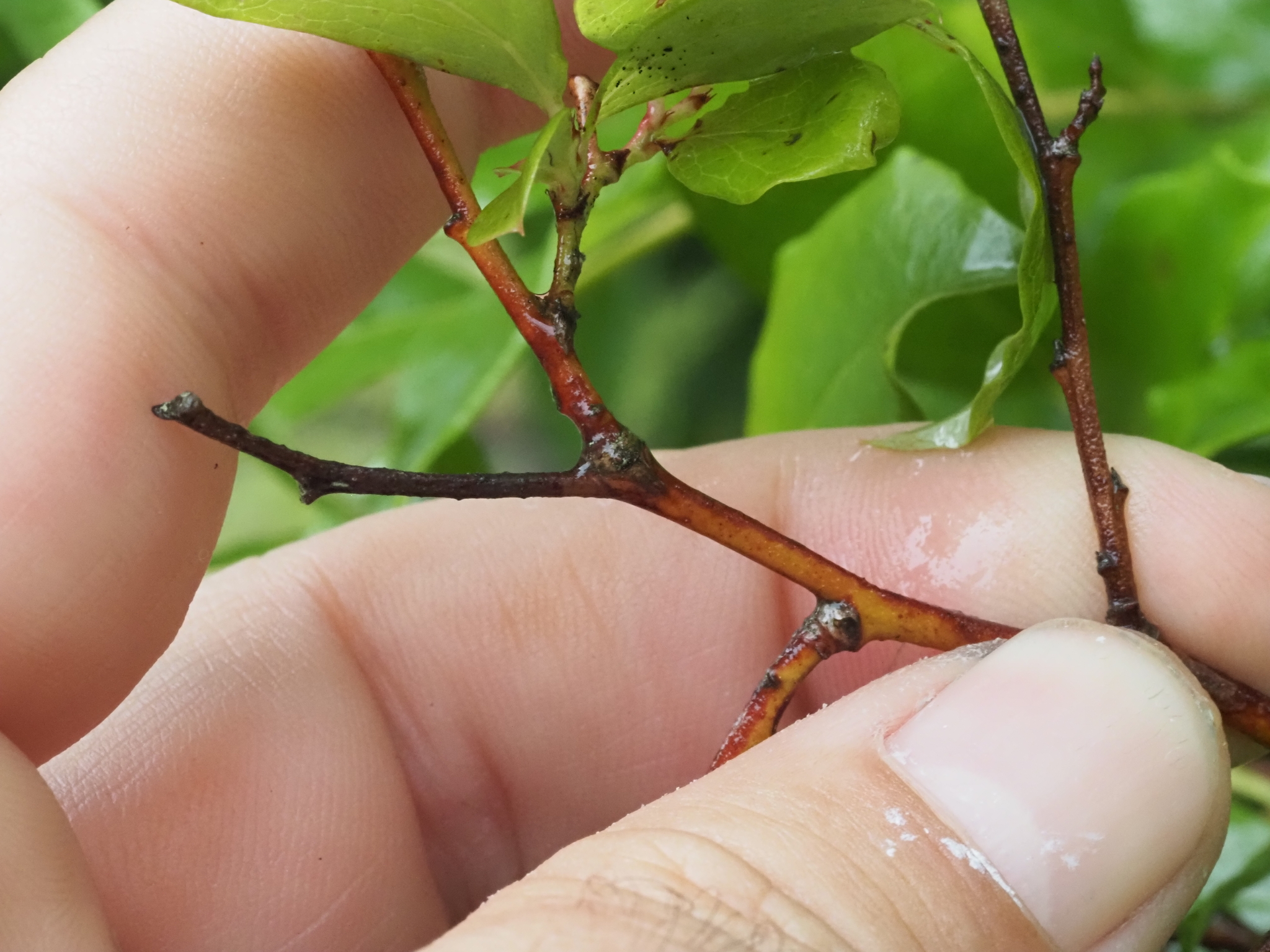Map Snapshot







7 Records
Seasonality Snapshot
Source: Wikipedia
| Vaccinium caesariense New Jersey blueberry | |
|---|---|

| |
| Scientific classification | |
| Kingdom: | Plantae |
| Clade: | Tracheophytes |
| Clade: | Angiosperms |
| Clade: | Eudicots |
| Clade: | Asterids |
| Order: | Ericales |
| Family: | Ericaceae |
| Genus: | Vaccinium |
| Species: | V. caesariense
|
| Binomial name | |
| Vaccinium caesariense | |
Vaccinium caesariense (New Jersey blueberry) is native to the Eastern United States.[1][2] It is a species in the genus Vaccinium, which includes blueberries, cranberries, huckleberries, and bilberries.
Distribution and habitat
[edit]Vaccinium caesariense is a native perennial plant in the Eastern United States, and is especially prominent in the New Jersey area, hence its common name New Jersey blueberry.[2] It is found in the coastal states from Florida to New Hampshire, almost always in wetlands.[2][3] Some of its native habitats include pine barrens, upland meadows and woods, ravines, and mountain summits.[4]
Description
[edit]Vaccinium caesariense has simple, small, oval green leaves during the summer and loses its leaves in the winter. This dicot exhibits a shrub growth habit, meaning this perennial, multi-stemmed woody plant is not likely to grow larger than 5 m (16 ft) in height, particularly due to its numerous stems.[citation needed]
Cultivation
[edit]In commercial cultivation of Vaccinium caesariense, they are usually planted at the beginning of fall or the end of winter, with organic fertilizers such as manure compost and vermicompost. As the plants develop woody stems irrigation is only needed during very dry periods. The cultivated plants are grown in soil that is accommodating to acidophilic plants.[citation needed]
In New Jersey
[edit]New Jersey has developed environmental and agricultural programs to protect and develop the New Jersey blueberry, such as the Blueberry Plant Certification Program and the Phillip E. Marucci Center for Blueberry & Cranberry Research & Extension.[citation needed]
New Jersey hybrid
[edit]Although the species is still found growing in natural habitats, most of New Jersey's cultivated blueberries are a hybrid Highbush type. It was first developed by Elizabeth Coleman White, the daughter of a cranberry farmer, and introduced in Whitesbog, Burlington County, New Jersey. During harvest season, New Jersey farmers set up road-side farm stands and sell the fresh blueberries. The hybrid fruit, when frozen, maintains quality and taste upon thawing.[1]
References
[edit]- ^ a b "Vaccinium caesariense". United States Department of Agriculture. Retrieved September 13, 2010.
- ^ a b c New England Wildflower Society. "Vaccinium caesariense Mackenzie (New Jersey highbush blueberry)". Retrieved 20 April 2019.
- ^ "Vaccinium caesariense". County-level distribution map from the North American Plant Atlas (NAPA). Biota of North America Program (BONAP). 2014. Retrieved 20 April 2019.
- ^ "Vaccinium caesariense". www.wildflower.org. Lady Bird Johnson Wildflower Center - The University of Texas at Austin. Retrieved 2022-10-16.
External links
[edit] Media related to Vaccinium caesariense at Wikimedia Commons
Media related to Vaccinium caesariense at Wikimedia Commons Data related to Vaccinium caesariense at Wikispecies
Data related to Vaccinium caesariense at Wikispecies


